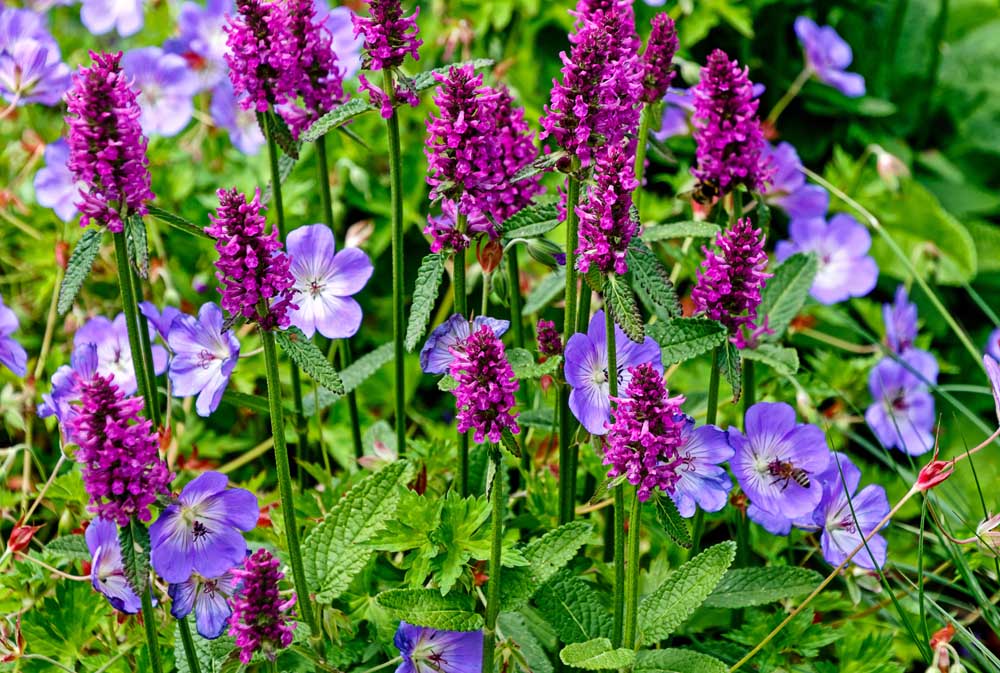Perennial Plant of the Year is the stachys Hummelo
Published 12:00 am Tuesday, January 15, 2019

- This year the Perennial Plant Association has named stachys Hummelo as the 2019 Perennial Plant of the Year. The stachys Hummelo has rose-lavender spikes that rise above mounds of crinkled green, clump-forming foliage. (123rf)
Traditionally, for the first columns of the New Year I like to honor the plants that have been named by specific industry association board members as being noteworthy.
This year the Perennial Plant Association has named stachys Hummelo as the 2019 Perennial Plant of the Year.
Let’s start at the basic level by answering what is a perennial?
A perennial is a plant that lives two or more years and produces new foliage, flowers and seeds each growing season. Perennials are always a good landscape investment providing that they are appropriate for planting in our climate.
Depending on the microclimate of your property, choices are usually made for a Department of Agriculture hardiness zone no higher than 6, which is the new rating established several years ago for Central Oregon. Most gardeners still hold to the safer hardiness of Zone 5.
The first article I read on the choice of the year referenced the perennial as being a cousin to the familiar lamb’s-ears. Then I went on to read, “Familiar, but not at all similar” and I breathed a sigh of relief. Lamb’s-ears has many merits but not as a focal point of a perennial garden.
The rose-lavender spikes of stachys Hummelo rise above mounds of crinkled green, clump-forming foliage. The perennial prefers a full sun to light shade location and is hardy to Zone 4.
The flowers are arranged in whorls. Bloom time is July to September. It is a relative of mint and eventually the clumps will spread by stolons or runners, but not as aggressively as some mints grow.
Hummelo is deer resistant and attracts pollinators. Removing faded flowers will encourage further blooms.
I have seen two spellings of the variety: Hummel and Hummelo. So I asked the magic machine to give me an answer.
The English translation of the German hummel is bumblebee which was attested to by growers of the variety. The genus name comes from the Greek stachys, meaning ear of corn in probable reference to the whorl of flowers around the stem.
The second spelling is to honor the town of Hummelo in the Netherlands. The variety was introduced by German grower Ernest Pagels in the late 1990s and gained further popularity after being used by the famous Dutch plantsman Piet Oudolf.
Oudolf is known as a leading figure in promoting planting drifts of perennials and grasses often referred to as the “New Perennial” movement, a naturalistic approach to gardening.
Recommendations for good companion plants include coneflower (echinacea), sea holly (eryngium), Russian sage (peroviskia), and catmint (nepeta).
The Chicago Botanic Garden (USDA Hardiness Zone 5) evaluated 22 varieties of stachys from 1998 through 2004.
According to the plant evaluation notes, the site received approximately 10 hours of full sun during the growing season and was openly exposed to wind in all directions. Their well-drained clay-loam was amended with composted leaves and had a pH of 7.4.
Maintenance practices were kept to a minimum to simulate home garden care. Water was provided as needed, and no fertilizer was applied. Mulch consisting of shredded leaves and wood chips was placed around the plants for water conservation and weed suppression. No winter protection was provided.
Hummelo was the only variety that received a 5-star rating. The following performance ratings were noted. Bloom period was from mid-June to early-August. Repeat flowering was observed in each year of the trial regardless of whether or not plants were deadheaded. Flower coverage was rated as excellent at 80 to 100 percent. The plant height measured 12 inches/24 inches. The first measurement being plant height to top of foliage mound: second measurement is full height including flowering stems. The plant is 20 inches wide.
The perennial certainly sounds like a good fit for our gardens and will definitely go on my plant list for 2019.
— Reporter: douvile@bendbroadband.com








